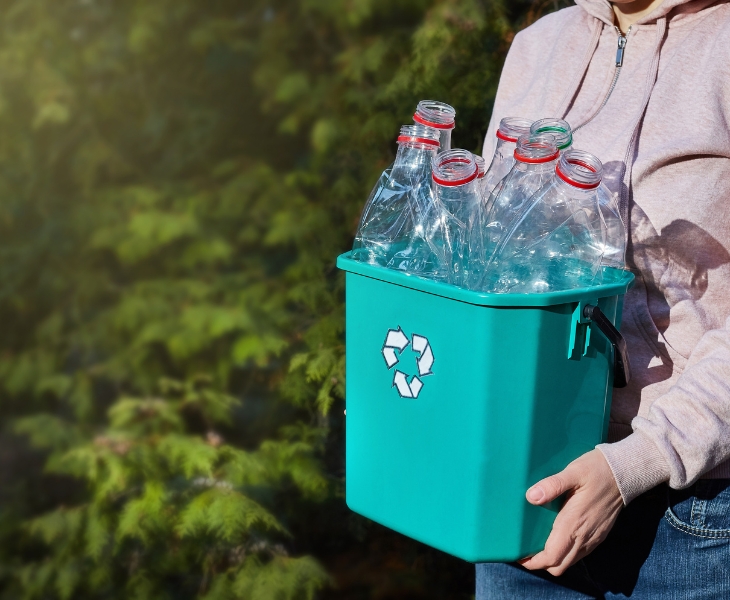Plastic Recycling Facts
Every day, Australians discard 2.7 million single-use or disposable coffee cups.
Humans have become dependent on single-use plastic, after all, it’s cheap, versatile, long-lasting, and can be found in everything from packaging and cutlery to beauty products and chewing gum. Despite the benefits, widespread use and then disposal of single-use plastic has created a huge problem, finding its way into the deepest parts of our oceans, the most remote forests, and even icebergs!
Many plastics can theoretically be recycled, but according to the UN, only about 9% of plastic waste generated is ever recycled. This is no surprise, as it can be difficult to understand what the small plastic recycling symbols —each denoting a different best practice —mean. The most confusing part is that just because the packaging has a recycling symbol doesn’t mean it gets recycled.
For many of us, throwing our waste into large recycling bins is enough to make us feel like we’ve done our part in protecting the environment. The plastics recycling process is far more complex than you may think, so before you make your next purchase, you might want to make sure you’re across some of the basics.

So, before you make your next purchase, be sure you understand the basics of plastic recycling.
1. Recycling plastic bags is 7x times more expensive than making new ones! However, these immediate costs are nothing, considering that plastic in landfill takes 1,000 years to decompose.
2. There are two kinds of plastics: thermosets and thermoplastics. Thermoplastics can be remelted
and remoulded into new products, making them recyclable, while thermoset plastics contain polymers that cross-link to form an irreversible chemical bond, and are therefore non-recyclable.
3. Many people misinterpret the numbered triangles on plastic products as a recycling symbol; however, these symbols are part of the Plastic Identification Code, which simply classifies the type of plastic material used.
4. Every time plastic is recycled, the polymer chain gets shorter, degrading its quality. More virgin material is added to help “improve” its quality in comparison to new, durable, and fresh goods.
5. Three types of plastic are frequently recycled: HDPE, PET, and PP. If your plastic bottle has one of these codes, it is almost certainly ok to recycle.
6. The plastic resin codes, which are represented by the numbers 1 to 7 on a plastic product, help to quickly identify the type of plastic it is.
7. Any plastic material or packaging with food residue on it CANNOT be recycled, which is why it’s important to wash your plastic cutlery and containers after use.
8. Small plastic films, wrappers, and thin plastic bags can clog processing machinery if they are processed
with larger, more rigid recyclable plastics. It’s crucial not to throw them in plastic recycling bins unless they’re acceptable.
9. You cannot recycle your disposable coffee cup unless you separate the outer paper packaging from the interior plastic. The outside of the cup is made of paper, and inside is a thin layer of plastic PP (Polypropylene) film that protects the liquid from leaking.
10. Salad bags and food containers wind up in landfill as they are made up of mixed polymers that are difficult
to separate in a recycling facility. For this reason, it is best to use reusable alternatives to these products where you can.
11. Bioplastics, composite plastic, and plastic-coated wrapping paper are non-recyclable as they contain polymers that form irreversible chemical bonds.
12. Polyvinyl Chloride (PVC) or vinyl-based products are best not purchased, as they can’t be recycled and are harmful to your health and the environment.
13. Stop buying Polyvinyl Chloride (PVC) or vinyl-based products, these can’t be recycled and are harmful to your health and the environment.
Fun fact: Recycling as a solution was first proposed by the plastics industry itself!
In the 1960s and 1970s, environmental agencies were established in several countries as a result of global environmental movements. Plastic companies started to come under scrutiny due to rising environmental concerns. The plastics industry responded by lobbying to protect their business interests as the danger from the environmental movement was growing rapidly. The plastics industry started a $50 million/year campaign by introducing an idea of plastic recycling and the establishment of curbside recycling collections.

